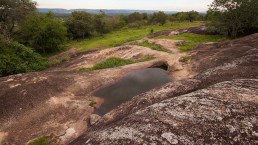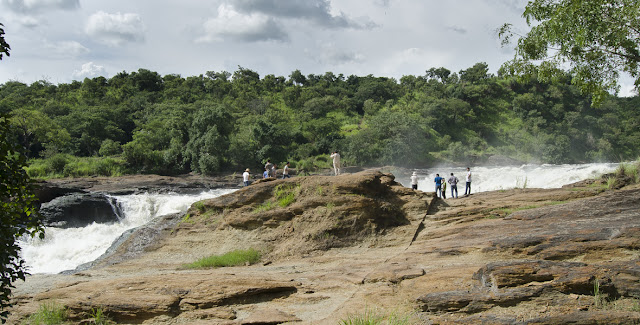WHIPSERS OF THE WILD
LAKE MBURO NATIONAL PARK
Park At A Glance:
- Size: 370km2
- Altitude: 1,220m - 1,828m above sea level
- Wetland habitats comprise 20% of the park's surface
- The parks' precarious past has seen wildlife virtually eliminated several times: firstly in various attempts to rid the region of tsetse flies, then to make way for ranches, and finally as a result of subsistence poaching.
- 20% of the park's entrance fee is used to fund local community projects such as building clinics and schools.
This is one of the largest five lakes that are near by the
wetlands, and it accounts for only 20% of this unique lake found in western
Uganda. The park covers only 370km² yet it has 5 lakes within. It’s situated
between the towns of Masaka and Mbarara taking you about 4 hours to get there. Lake Mburo National
Park is the only place where you can
spot the impalas in Uganda, antelopes as well as the Elands. There are also
many herds of buffalos and Zebras with in this national park.
Lake Mburo National Park is a very special place; every part
of it is alive with variety, interest and colour. It contains an extensive area
of wetland and also harbours several species of mammals and birds found nowhere
else in Uganda. Its sculptured landscape, with rolling hills and idyllic lake
shores has a varied mosaic of habitats; forest galleries, seasonal and
permanent swamps, rich acacia-woodland and grassy valleys which all support a
wealth of wildlife.
At 370 square km, Lake Mburo National Park is small in
comparison with many other East African parks, but with its rich variety of
habitats; dry hillsides, rocky outcrops, bushy thickets, open and wooded
savannah, forest, lakes and swamps, it is home to a surprising diversity of
plants and animals.
Lake Mburo is the only park in Uganda with eland, impala and
klipspringer. It is also home to the largest population of zebra in Uganda
estimated at about 5,000 and probably contains the highest concentration of
leopard found anywhere in Uganda. Buffalo, waterbuck, topi and warthog are also
very common. Reedbuck and oribi can also be spotted in the open valleys. Hyena,
genet, bush pigs and white tailed mongoose are often seen on night game drives.
At the centre of the Park is Lake Mburo, which together with
14 other lakes in the area, forms part of a wetland system. This system is
linked by a swamp some 50 km long, fed by the Ruizi River on the western side.
Five lakes, of which the largest is Lake Mburo, occur within the Park's
boundary.
Almost a fifth of the Park's area consists of wetlands -
both seasonally flooded and permanent swamps. The various types of swamps are
home to a wide variety of wetland birds, as well as the shy, rare sitatunga
antelope. Lake Mburo 's surface and its fringing vegetation are always
changing, and it is delightful to take a boat out and experience the lake's
moods and watch the numerous hippos, some crocs and an incredible amount of
African fisheagles. The lake is also one of the best places to spot the rarely
seen African finfoot and white backed heron amongst many other water birds.
CLIMATE
Lake Mburo National Park lies in a rain shadow between Lake
Victoria and the Rwenzori Mountains, and receives an average of 800 mm of rain
a year. Being near the equator, the rainfall pattern is bimodal, with the long
rains occurring from March to June, and the short rains from September to
December.
The rains are rather erratic and unpredictable, but most
rain tends to fall in April and November. The best time to visit the park is
actually the beginning of the rainy season in March or September. The average
recorded temperature is 26° C with daily variations ranging from 14° C to 32°
C. July and August are the hottest months, but December and January can also be
very hot.
In the evenings or on a rainy day it can get quite chilly no
matter which time of the year it is and on a sunny day it will always be hot
and feel even hotter in the rainy season because of the increased humidity.
Generally Lake Mburo has nearly the perfect climate with warm, but not over hot
days and slightly colder nights.
TOPOGRAPHY
The Park lies between 1219m and 1828m above sea level. High
hills and rocky, eroded ridges characterize the western part of the Park; here
deep valleys support the forest found nowhere else. In the eastern sector, the
rolling, wooded hills are intersected by wide, flat bottomed valleys, which are
seasonally flooded and drain into the swamps and lakes. The Ruizi River flows
in a south-easterly direction and forms part of the western boundary of the
Park. Lake Mburo and its associated wetlands eventually drain into Lake
Victoria.
GEOLOGY
The Park is underlain by very ancient (more than 500 million
years old) Precambrian metamorphic rocks which belong to the 'basement system'.
Mihingo Lodge is built on one of these outcrops. Most of the soils in Lake
Mburo are heavy clay and loam soils. Although surrounded by lakes there is
hardly any ground water in Lake Mburo National Park owing to the deep clay
soils preventing any water from entering deep into the ground.
Lake Mburo National Park is the best place in Uganda to see
klipspringers only living on rocky outcrops and often seen at Mihingo Lodge.
Also plains game like zebra and vast amounts of impala and eland can often be
found in Lake Mburo National Park, but nowhere else in Uganda. Lake Mburo is
also home to more commonly see species like waterbuck, topi, warthog, bushbuck,
reedbuck, oribi, vervet monkey, baboon and many types of mongoose.
According to our records Lake Mburo might have the highest
leopard concentration ever recorded, due to its perfect leopard habitat and
thousands of impala which are leopards’ favourite prey in Mburo. Leopard are
mostly seen on night game drives together with the very widespread, but rarely
seen bushpig and hyenas. Nightgame drives also reveal the small jennat cats and
white tales mongoose.
Encountering buffalo on walking safaris or horse rides is
one of the most exciting experiences you can have on a safari.
Lake Mburo is now also home to 15 endangered Rothschild’s
giraffe, which were introduced in July 2015. It is exhilarating encountering
them on one of our horse safaris.
Another special animal at Mihingo Lodge are the bushbabies
(longtailed galago) which come nearly every night to the bushbaby platform
below the bar area. This is one of the only places in Africa to see this very
shy nocturnal primate close up.
The large variety of habitats in Lake Mburo National Park
supports over 350 bird species including rare, but regularly seen species like
African finfoot and white-backed heron. If you are able to call the papyrus
gonolek using a recorded bird call, it will come to the edge of the papyrus,
otherwise this papyrus endemic species is rarely seen. If you are lucky you
might see a shoebill and in the rainy season the grey crowned cranes breed and
raise their fluffy chicks in the swampy areas of the valleys.
Lake Mburo is also home to a huge number of African fish
eagles. There is a large variety of savannah and water birds including some
spectacular species like Narina trogon, Ross’s turaco, African green-pigeon and
the bare-faced go-away-bird often seen around Mihingo Lodge. If you ask one of
our guides you can try and track one of the Narina trogon’s. When you hear
their calls a guide can take you close to the area it is calling and with a bit
of luck you can spot this very elusive and beautiful little bird. With a
recorded bird call it is quite easy to see them as they will come to see who
has invaded their territory.












Comments
Post a Comment